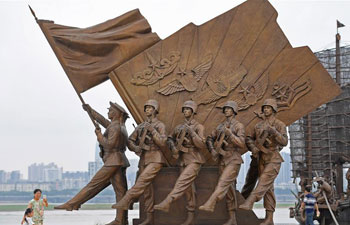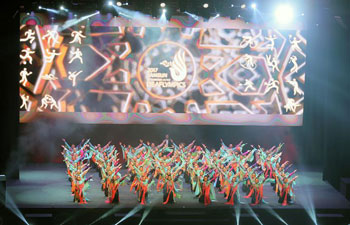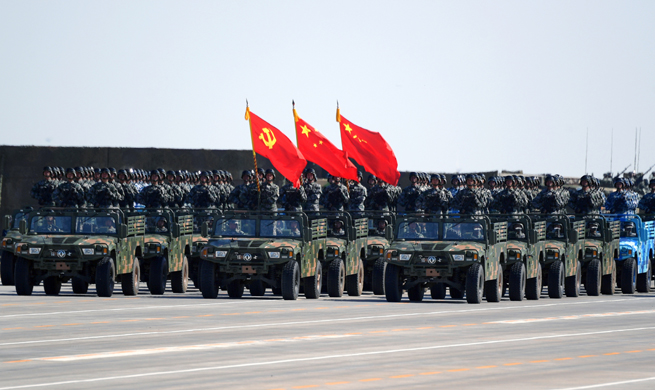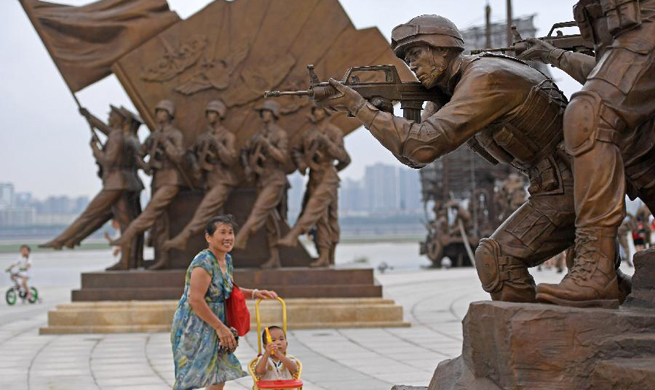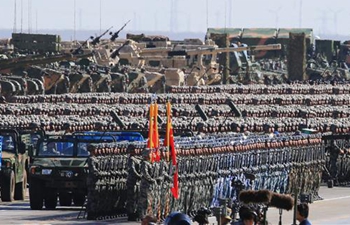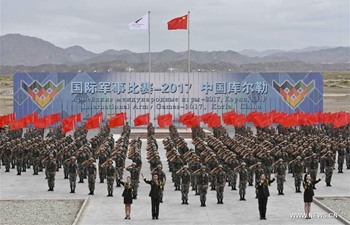NEW DELHI, July 31 (Xinhua) -- The recent uproar over signage at Metro rail stations in Hindi -- India's official language -- has taken by storm the southern city of Bengaluru, the most cosmopolitan city in the country.
In what started as a civilian protest and what has now taken deep political hues, Bangaloreans have upped the ante against alleged imposition of Hindi language on a non-Hindi speaking state.
The issue evoked emotions to the extent that the southern state of Karnataka's Chief Minister Siddaramaiah took the central government by the horns, seeking immediate removal of the signage to honour "cultural aspirations and sentiments" of the people of the city.
The campaign started as a civilian protest by activists after the Green Line of the Namma Metro (Bengaluru Metro) was inaugurated between Yelachanahalli and Nagasandra stations.
It became the launch pad for the Namma Metro Hindi Beda campaign, both offline and online, by supporters who were angered by the prominent usage of Hindi signage. As it gathered steam, the crusade took on a political colour with the Chief Minister, other state political leaders, film actors and prominent writers and playwrights supporting it.
This further intensified the agitation with activists from Karnatake Rakshana Vedike (KRV), a local organization, taking law into their hands and blackening Hindi signs at different Metro stations. The protestors argued that the state's language policy only accorded to have signage in English and Kannada (the regional language of Karnataka).
"Yes, we all wanted to know why Bengaluru. We are protesting democratically and without causing damage to government property," said a member of KRV who was detained after protestors blackened Hindi signs at a few Metro stations.
Even historically, the subject of having a pan-Indian language has been the cause of much debate and violence, keeping in mind the diversity of the country. Before Independence, different provinces used different languages, while others like Panjab province used both Urdu and Punjabi as the official languages.
While the Indian Constitution was being framed before the country's Independence, there were heated debates as to whether Hindi should be made the official language of the country. Despite protests, the proposal was accepted but was expected to replace English. While that never happened, the imposition of Hindi as official language raised violent stirs.
Take for example Tamil Nadu, the state neighbouring Bengaluru, the capital of Karnataka. The state became the battleground for anti-Hindi protests a few years after Independence where even riots broke out killing several people.
Regional political parties have since then ruled the state basking on the anti-Hindi sentiment. These emotions of having a common history, language and culture not only bind the people of one state together but are also played on effectively to evoke sentiments of preservation of identity.
"Of course the signage in Hindi need to go. This is a Kannada speaking city where the Hindu hegemonic forces are trying to impose a language on us. When majority of people in the state speak in Kannada, why does the need arise to have the boards in Hindi? Kannadigas have a unique identity of their own and we will do everything to protect it," said 22-year-old Kuntal Venkat, a college student who participated in the protests.
However, the changing landscapes of cities across the country, the process of urbanisation and the booming economic dynamics have also added heterogeneity to traditional cultures. Cities like Mumbai and Bengaluru are the examples in point where public spaces like malls are now being increasingly manned by Hindi-speaking people from the northern states of the country. This essentially places a chunk of population on the other side of the argument.
"Bengaluru represents a hub, an amalgamation of many different cultures. It is no longer a city that represents people of one culture only. People come here from all over the country to work and now a large population in the city is Hindi-speaking. Metro serves everyone, so why not have a language majority of people understand?" said Manu Verma, a 31-year-old techie from Delhi who works in the city.
The issue has also brought the central government and the Karnataka government to a situation of face-off. It is being claimed that the cost of building the Metro had been shared between the central and the state governments and thus the former's choice of language needs to be mentioned on the signage.
"This special reservation has been made for Namma Metro as all other states follow English and regional language use. Hindi is the national language," said an Indian government official in Delhi.
Just the direction to remove signage in Hindi apart, activists have also raised the demand of giving more employment to Kannadigas in Bangalore Metro Rail Cooperation Ltd. as well as giving mandatory language lessons to Hindi-speaking employees.
It's language war once again in the country.




